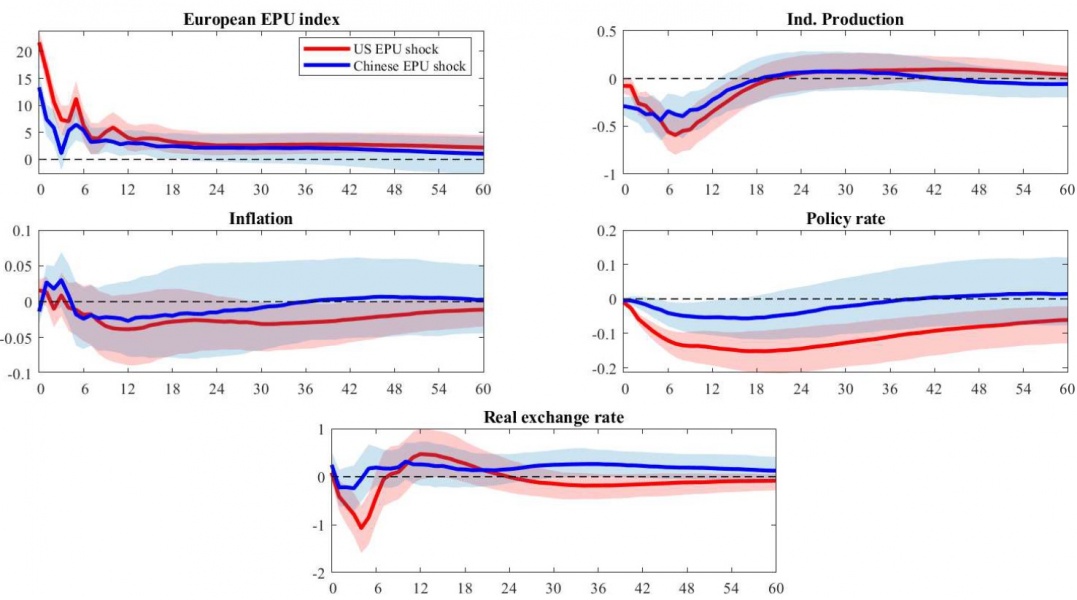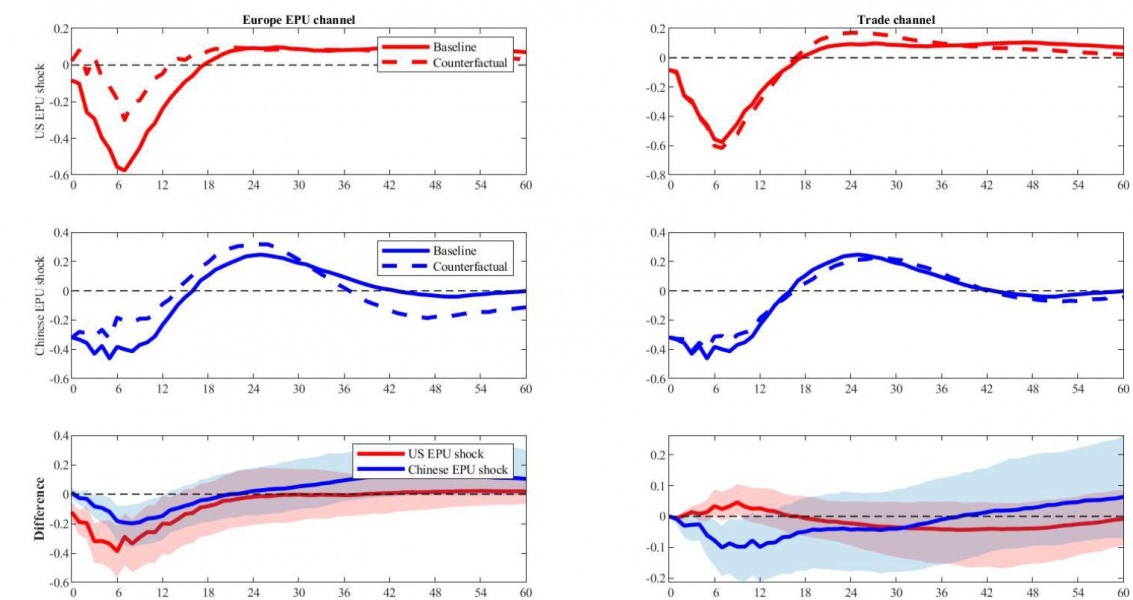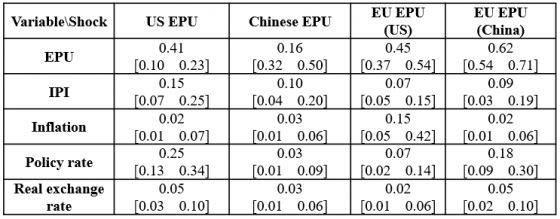References
Arigoni, F., and Lenarčič, Č. (2023). Foreign economic policy uncertainty shocks and real activity in the Euro area. Central Bank of Ireland Research Technical Paper, Vol. 2023, No. 7 (07RTP23).
Baker, S. R., Bloom, N., and Davis, S. J. (2016). Measuring economic policy uncertainty. The Quarterly Journal of Economics, 131(4): 1593–1636.
Bloom, N. (2009). The impact of uncertainty shocks. Econometrica, 77(3): 623–685.
Caggiano, G., Castelnuovo, E., Delrio, S., and Kima, R. (2021). Financial uncertainty and real activity: The good, the bad, and the ugly. European Economic Review, 136: 103750.
Caggiano, G., Castelnuovo, E., and Figueres, J. M. (2017). Economic policy uncertainty and unemployment in the United States: A nonlinear approach. Economics Letters, 151: 31–34.
Caggiano, G., Castelnuovo, E., and Figueres, J. M. (2020). Economic policy uncertainty spillovers in booms and busts. Oxford Bulletin of Economics and Statistics, 82(1): 125– 155.
Caggiano, G., Castelnuovo, E., and Groshenny, N. (2014). Uncertainty shocks and unemployment dynamics in us recessions. Journal of Monetary Economics, 67: 78–92.
Castelnuovo, E. (2022). Uncertainty before and during Covid-19: A survey. Journal of Economic Surveys, 37(3): 821–864.
Fontaine, I., Didier, L., and Razafindravaosolonirina, J. (2017). Foreign policy uncertainty shocks and us macroeconomic activity: Evidence from China. Economics Letters, 155: 121–125.
Leduc, S. and Liu, Z. (2016). Uncertainty shocks are aggregate demand shocks. Journal of Monetary Economics, 82: 20–35.
Nodari, G. (2014). Financial regulation policy uncertainty and credit spreads in the US. Journal of Macroeconomics, 41: 122–132.








